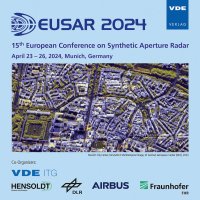Mapping subsurface scatterers from SAR backscatter time series
Konferenz: EUSAR 2024 - 15th European Conference on Synthetic Aperture Radar
23.04.2024-26.04.2024 in Munich, Germany
Tagungsband: EUSAR 2024
Seiten: 5Sprache: EnglischTyp: PDF
Autoren:
Wagner, Wolfgang; Raml, Bernhard; Lindorfer, Roland; Schobben, Martin; Massart, Samuel; Vreugdenhil, Mariette; Stachl, Tobias; Cao, Senmao; Ullmann, Tobias
Inhalt:
Microwave pulses transmitted by Synthetic Aperture Radars (SAR) penetrate several centimetres to decimetres into dry soil. Even at the comparably short wavelength of the SAR instrument mounted onboard the Sentinel-1 satellites (C-band, 5.6 cm), dielectric discontinuities in the soil profile can give rise to strong subsurface scattering signals that dominate the returns from the soil surface. In such situations, backscatter decreases when the soils get wet because the damping of subsurface scattering signals is more important than the increased backscatter from the soil surface. By comparing backscatter time series with modelled soil moisture data, this characteristic behaviour can be detected, opening up the possibility of using SAR data for mapping subsurface scatterers at high spatial resolution. This contribution introduces an index for mapping surface scatterers using a global Sentinel-1 backscatter datacube. We computed the index over a study region covering the Iberian Peninsula and north-western Africa, which was the focus of a previous study using the Advanced Scatterometer (ASCAT). The results show that the Sentinel-1-based index reflects large-scale patterns of subsurface scattering as detected by ASCAT very well. At local scales, the Sentinel-1 maps reveal patterns related to soil and landscape features in much more detail than depicted by currently available soil maps.


